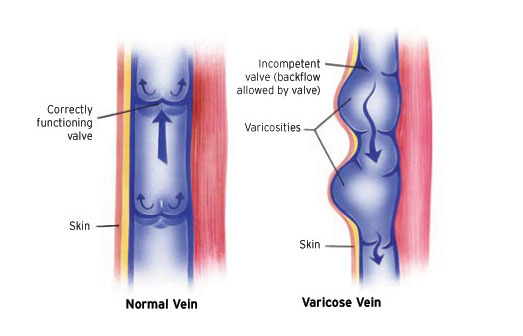Peripheral arterial disease, known as PAD, occurs when the peripheral arteries (those furthest from your heart) become narrowed, particularly in the legs, though it can also occur in the arms and stomach. PAD is relatively common, affecting one in five Australians. Half of those won’t show any symptoms, which leads to under-treatment of the condition in general. Today we are going to take a look at the disease to learn more about what it is and how is it treated.
Peripheral Arterial Disease: what is it?
Peripheral arterial disease leads to reduced blood flow in the limbs and can cause a range of issues including gangrene, pain and coldness in the legs, sores and wounds that won’t heal and chronic weakness/numbness.
It also greatly increases the likelihood of more serious issues, with people suffering from PAD six times more likely to have a stroke or heart attack, while also being at risk of limb ischemia which is irreversible damage to the tissue in the limbs that often leads to amputation.
How does PAD develop?
When your body is processing fatty and sugary matter, it can form a substance known as plaque in the veins. When there is an excess of this substance, it can stick to the walls of the artery, forming a clot. As more plaque passes through the blood vessel, it builds onto this clot, making it larger and narrowing the vein more and more. This process is known as atherosclerosis.
As this blockage grows, it slows the flow of blood in the vein, leading to a range of symptoms including:
- Numbness and weakness in the legs
- Sores on the feet, toes and legs that don’t heal
- Painful cramping around the calves, thighs and hips after walking, especially upstairs
- Discolouration of the skin in your legs
- Erectile dysfunction
In severe cases, this can lead to much more serious problems like
- Stroke/Heart attack: The increased build-up of plaque in your legs is also normally present in the rest of your body, and poor blood flow can cause a dangerous lack of blood to your brain or heart.
- Limb ischemia (critical): In the early stages varicose veins and poor circulation affect your legs, but as it progresses, open wounds in the legs won’t heal, infections become common, and the risk of gangrene and potential for amputation becomes a possibility.
How is it treated?
Thankfully, treating and preventing PAD is relatively easy and with consistent adherence, most people can see a benefit and reduction of symptoms in just a month or two.
Regular physical exercise
This is crucial to mitigate risk factors and help reduce a range of issues including high blood pressure, high cholesterol levels and excess weight.
Diet
Things like saturated and trans fats, cholesterol and salt all should be avoided. Focus your diet on plant-based foods like fruits, vegetables, legumes and leafy greens. This will not only help your veins but make it easier to lose excess weight.
Stress management
Increased stress levels can increase blood pressure, put unwanted strain on the body as well as the mental health effects. Learn how to manage stress, finding time to relax, get good quality sleep and where possible, reduce or spread out your workload. Speaking to a therapist, counsellor or psychologist is the best thing to do here if you’re particularly stressed.
Other lifestyle factors
Smoking has an enormously detrimental effect on your heart and veins and is the primary risk factor for PAD. Quitting smoking makes a big difference. In addition, avoiding sedentary activities and keeping active is helpful in caring for the veins.
In more serious cases your doctor may prescribe medication or a more strict regime in order to prevent complications from occurring, and in the most severe of cases, they may refer you for surgery. Prevention and management is the most effective way of treating PAD, so if you think you might have it, if you’ve got a family history or if you’re a smoker, speak to your doctor about PAD today.
Seek expert advice
The doctors at The Vein Institute specialise in varicose vein treatment. We offer patients a comprehensive program using non-surgical laser treatment techniques. You can learn more in our Definitive Guide to Varicose Vein Treatment.
The benefits of non-surgical varicose vein treatment are:
- Walk-in walk-out treatment
- 98% success rate
- Extremely effective
- Can be performed at a clinic (no hospitalisation)
- No general anaesthetic
- Medicare rebates apply
- No downtime or time away from work
To book a consultation and discuss our treatment program, call 04 2010 2637. Or, make an enquiry via the Contact Us page.



